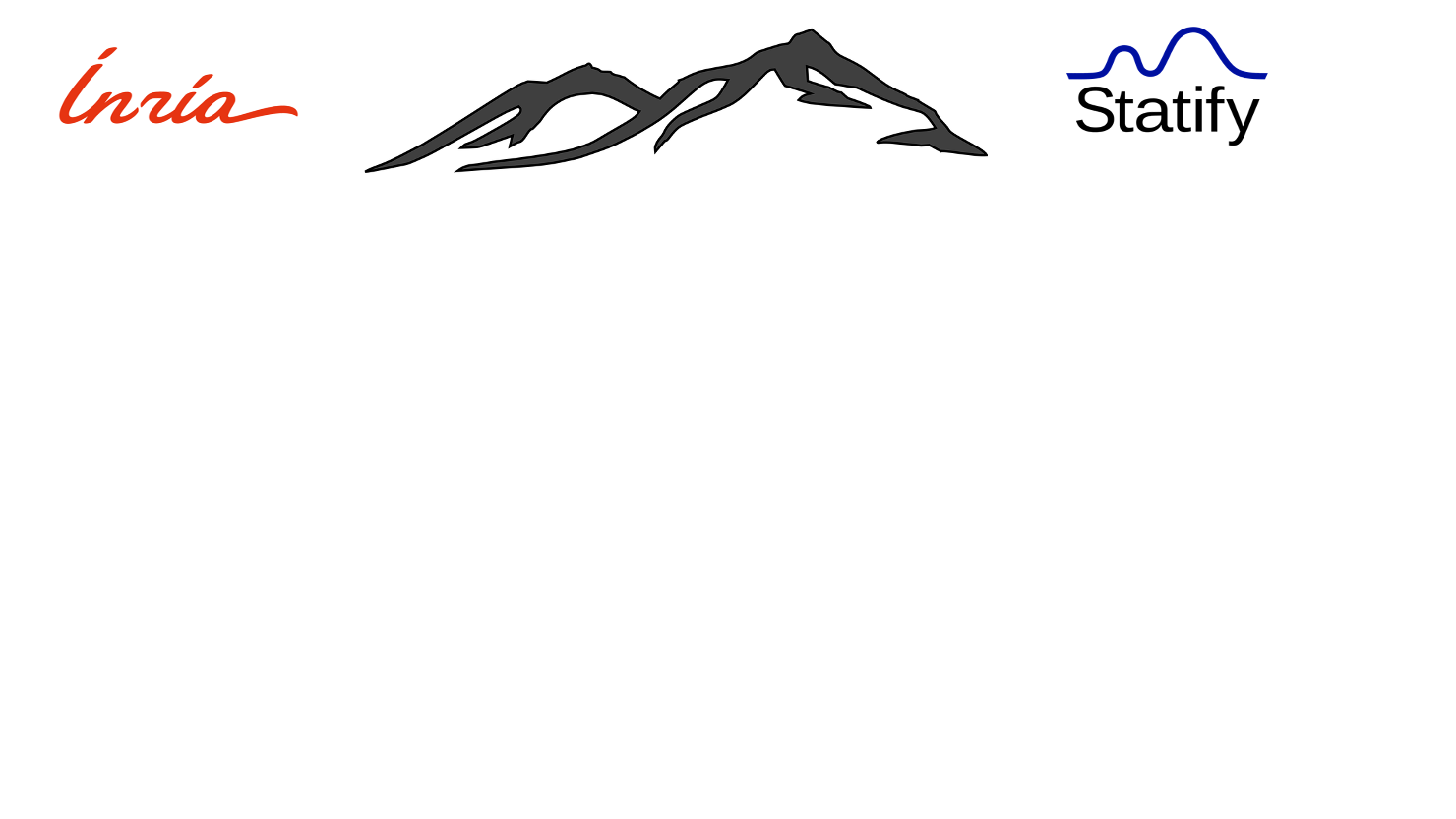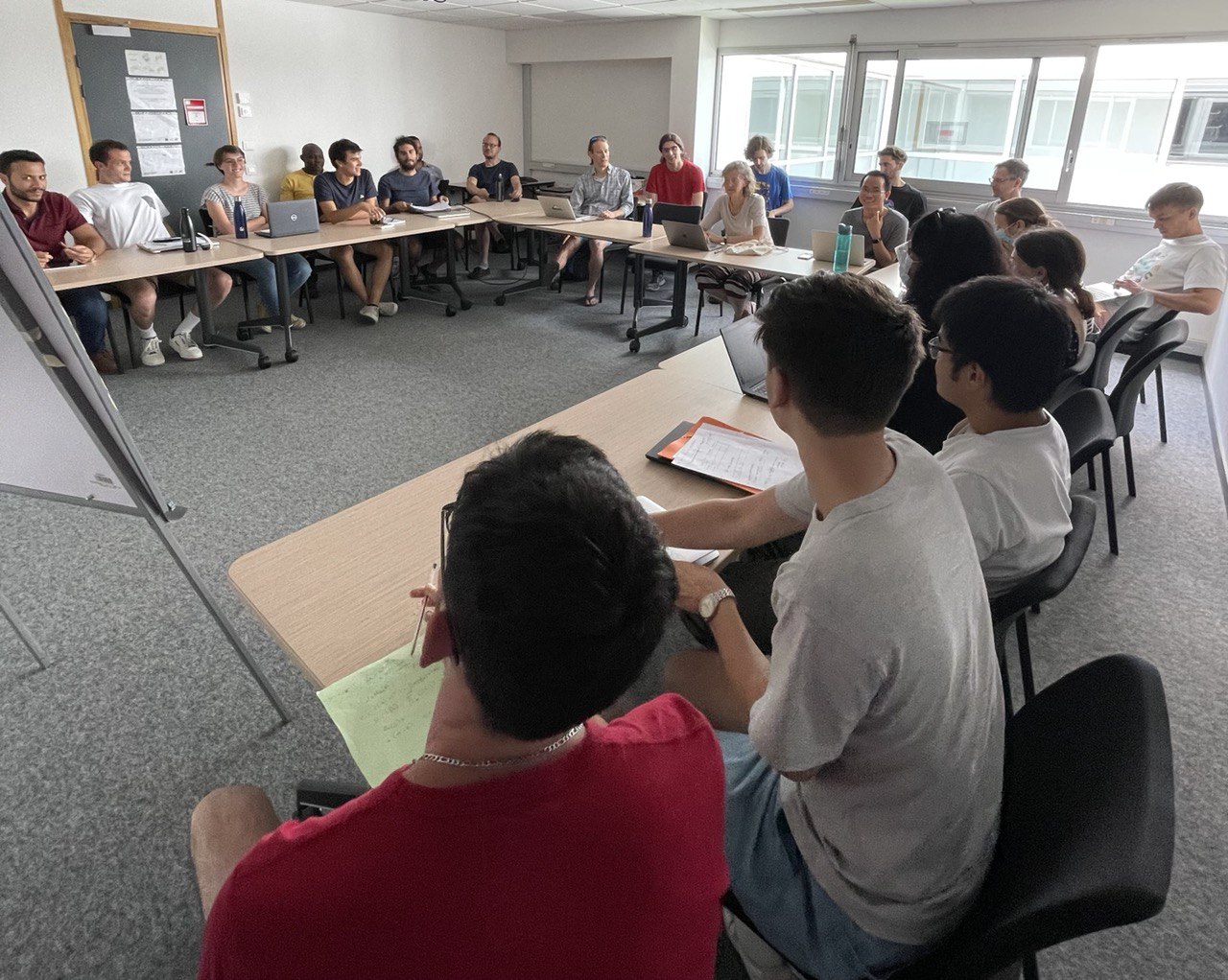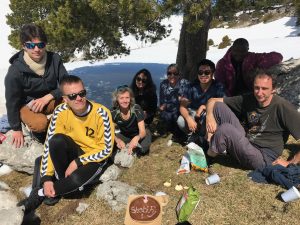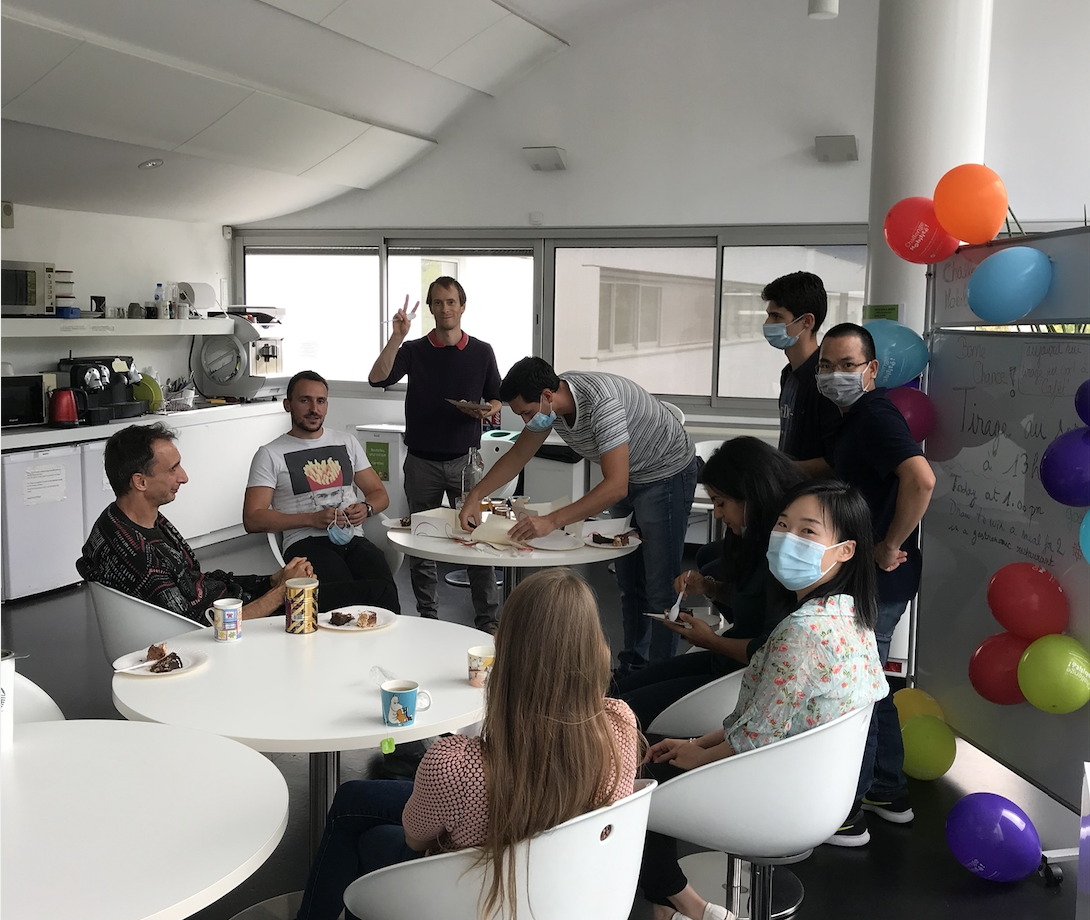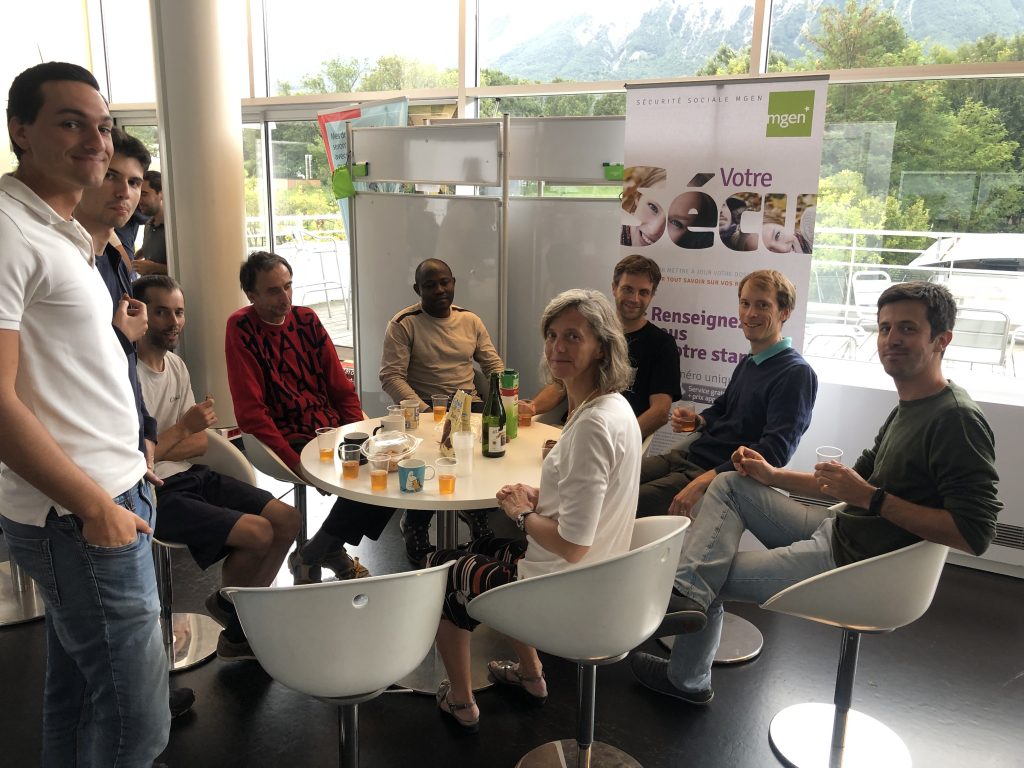Softwares
BNP-MRF software
This code provides tools to design tractable Bayesian non-parametric (BNP) priors that combine standard BNP priors such as Dirichlet and Pitman-Yor processes and discrete MRFs such as the Potts model. Parameters estimation is implemented via a variational approximation. The proposed model and an illustration on an image segmentation task can be found in the companion paper.
PyHRF software
This software development project followed the HEROES project. The goal is to build on our work on fMRI analysis to eventually reach clinical applications. This implies the development of user-friendly and flexible software. The PyHRF package will provide a set of tools for addressing the two main issues involved in intra-subject fMRI data analysis: (i) the localization of cerebral regions that elicit evoked activity and (ii) the estimation of the activation dynamics also referred to as the recovery of the Hemodynamic Response Function (HRF). To tackle these two problems, PyHRF implements the last research developments of the project partners which are Statify and PARIETAL teams, CEA NeuroSpin, GIN and IRIT Toulouse.
The P-LOCUS software
The P-LOCUS software addresses the delineation of lesions in pathological brains. It was implemented with financial support from GRAVIT (Grenoble Alpes Valorisation Innovation Technologies with the goal to create a Start-up. P-LOCUS analyses a combined dataset of various 3D MRI sequences. Its originality comes from 1) it is fully automatic: no external user interaction and no training data required; 2) the possibility to combine information from several images (MR sequences), 3) a statistical Bayesian framework for robustness to image artifacts and a priori knowledge incorporation; 4) a voxel-based clustering technique that uses Markov random fields (MRF) incorporating information about neighboring voxels for spatial consistency and robustness to imperfect image features (noise); 5) the possibility to select and incorporate relevant a priori knowledge via different atlases, e.g. tissue and vascular territory atlases; 6) a fully integrated preprocessing steps and lesion ROI identification. The P-LOCUS software was presented at various conferences and used for the BRATS Challenge on tumor segmentation organized as a satellite challenge of the Miccai conference in Nagoya, Japan in 2013. A paper published in IEEE trans. on Medical Imaging reports the challenge results. P-LOCUS was best on average among unsupervised methods. The software has been registered at APP in 2013 and is now undergoing industrial development within the Pixyl startup created in March 2015. Web site
R and python packages
Statify is involved in the development of several R packages, some available on the CRAN archive.
Bayesian modeling
BNPdensity
Bayesian nonparametric density estimation modeling mixtures by a Ferguson-Klass type algorithm for posterior normalized random measures.
CRAN link. Paper.
Local R-hat
This R package implements a local version of the Gelman-Rubin R-hat diagnostic.
localrhat github repo. Paper.
Gibbs-type priors
Computing clusters prior distribution for Gibbs-type processes.
github pages: Julia package, R package. Paper.
Gaussian Pre-Activations
This package computes activation functions $latex \phi_{\theta}$ that ensure Gaussian pre-activations in neural networks.
Code TBA. Paper.
Other fields
xLLiM
Provides tools for nonlinear regression using a mixture of regression models and an inverse regression strategy. The methods include the GLLiM model based on Gaussian mixtures, a robust version of GLLiM, named SLLiM based on a mixture of Generalized Student distributions, and a block version of GLLiM. Web site
FDG (one-Factor copulas with Durante Generators)
This R package provides tools for building high-dimensional copulas with the FDG model, a class of multivariate copulas based on one-factor copulas (Mazo et al, 2016). FDG copulas are a class of copulas featuring an interesting balance between flexibility and tractability. This package provides tools to construct, calculate the pairwise dependence coefficients of, simulate from, and fit FDG copulas. The acronym FDG stands for one-Factor with Durante Generators, as an FDG copula is a one-factor copula – that is, the variables are independent given a latent factor – whose linking copulas belong to the Durante class of bivariate copulas (also referred to as exchangeable Marshall-Olkin or semilinear copulas).
Web site.
MMST
(Mixtures of Multiple scaled Student distributions). The package is not yet available on the CRAN. It implements more efficiently the models and inference procedures described in Forbes and Wraith 2014 and has been used on brain MRI data sets (Arnaud et al, 2018). Some subroutines have been written in C++. Web site: no public website yet. A temporary image docker is available here.
PBC
(Product of Bivariate Copulas). This R package is not maintained on the CRAN anymore. It provides tools for building copulas with the PBC model, a class of multivariate copulas based on Products of Bivariate Copulas (Mazo et al 2015). Copulas are a useful tool to model multivariate distributions. While there exist various families of bivariate copulas, much fewer have been done when the dimension is higher. To this aim, an interesting class of copulas based on products of transformed copulas has been proposed. However, the use of this class for practical high-dimensional problems remains challenging. Constraints on the parameters and the product form render inference, and in particular the likelihood computation, difficult. In this R package, we propose a new class of high-dimensional copulas based on a product of transformed bivariate copulas. No constraints on the parameters refrain from the applicability of the proposed class which is well suited for applications in high dimensions. Furthermore, the analytic forms of the copulas within this class allow associating a natural graphical structure which helps to visualize the dependencies and to compute the likelihood efficiently even in high dimensions. Web site.
BOLD model FIT
This Matlab toolbox performs the automatic estimation of biophysical parameters using the extended Balloon model and BOLD fMRI data. It takes as input a MAT file and provides as output the parameter estimates achieved by using stochastic optimization. It is available on Hal as a companion document of the corresponding publication.
Web site.
Toolboxes “HDDA” and “HDDC”
The High-Dimensional Discriminant Analysis (HDDA) toolbox contains efficiently supervised classifiers for high-dimensional data. These classifiers are based on Gaussian models adapted to high-dimensional data. The HDDA toolbox is available for Matlab and is included in the software MixMod. The High-Dimensional Data Classification (HDDC) toolbox contains efficient unsupervised classifiers for high-dimensional data. These classifiers are also based on Gaussian models adapted to high-dimensional data. The HDDC toolbox is available for Matlab [link].
Contribution to the toolbox “StatLearn”
An efficient Matlab toolbox containing useful statistical learning tools. It is strongly object-oriented and well-documented. This toolbox is designed to allow easy manipulation of probability models. It helps to build new statistical methods with very clean code.
[link].
Software “Extremes”
Statistical analysis of extreme events, version 2.0.
[link]
The SpaCEM3 software
The SpaCEM3 (Spatial Clustering with EM and Markov Models) software replaces and adds new functionalities to the former still available SEMMS (Spatial EM for Markovian Segmentation) package. SpaCEM3 proposes a variety of algorithms for image segmentation, supervised and unsupervised classification of multidimensional and spatially located data. The main techniques use the EM algorithm for soft clustering and Markov Random Fields for spatial modelling. The learning and inference parts are based on recent developments based on mean field approximations. New additions include a) New Markov models including various extensions of the Potts model and triplets Markov models; b) Additional treatment of very high dimensional data using dimension reduction techniques within a classification framework; c) Models and methods allowing supervised classification with new learning and test steps. The software is written in C++ (35000 lines) and is available with a new user interface at [Link]. A user guide and example data sets are also available there. The software has been registered at APP in 2007 under the CeCILLB license. A description of its main functionalities is also available in French [Revue Modulad 2009].
The SEMMS software
Spatial EM for Markovian Segmentation.
[Link]
The FASTRUCT software (for Windows OS)
Bayesian model-based clustering programs have gained increased popularity in studies of population structure since the publication of the software structure. These programs are generally acknowledged as performing well, but their running time may be prohibitive. FASTRUCT is a non-Bayesian implementation of the classical model with no-admixture uncorrelated allele frequencies. This new program relies on the Expectation-Maximization principle and produces assignments rivaling other model-based clustering programs. In addition, it can be several-fold faster than Bayesian implementations [Chen et al. 2006]. The software consists of a command-line engine, which is suitable for batch-analysis of data, and an MS Windows graphical interface, which is convenient for exploring data. It has been registered at APP in 2006, under the CeCILLB license.
[Link]
The TESS software
TESS is a computer program in C++ that implements our Bayesian clustering algorithm for spatial population genetics [Chen et al. 2007]. Is it particularly useful for seeking genetic barriers or genetic discontinuities in continuous populations? The method is based on a hierarchical mixture model where the prior distribution on cluster labels is defined as a Hidden Markov Random Field (Francois et al. 2006). Given individual geographical locations, the program seeks population structure from multilocus genotypes without assuming predefined populations. TESS takes input data files in a format compatible with existing non-spatial Bayesian algorithms (e.g., STRUCTURE). It returns graphical displays of cluster membership probabilities and geographical cluster assignments from its Graphical User Interface. It has been registered at APP in 2006, under the CeCILLB license.
[Link]
The ECMPR software
The ECMPR (Expectation Conditional Maximization Point Registration) package implements the technique described in (Dewaele et al, ECCV 2006) and (Horaud et al, IEEE PAMI 2010). It registers two (2D or 3D) point clouds using an algorithm based on maximum likelihood with hidden variables. The method can register both rigid and articulated shapes. It estimates both the rigid or the kinematic transformation between the two shapes as well as the parameters (covariances) associated with the underlying Gaussian mixture model.
The LOCUS software
The LOCUS software analyses in a few minutes a 3D MR brain scan and identifies brain tissues and a large number of brain structures. An image is divided into cubes on each of which a statistical model is applied. This provides a number of local treatments that are then integrated to ensure consistency at a global level. It results in low sensitivity to artifacts. The statistical model is based on a Markovian approach which enables capturing the relations between tissues and structures, to integrate a priori anatomical knowledge and handling local estimations and spatial correlations (Scherrer et al. MICCAI 2009). A flyer in French and English, a slide, and a video are available for a short description. The software is written in C++ (50000 lines).
[Link]
The POPEYE software
POPEYE contains software modules and libraries jointly developed by three partners within the POP STREP project: INRIA, University of Sheffield, and University of Coimbra. It includes kinematic and dynamic control of the robot head, stereo calibration, camera-microphone calibration, auditory and image processing, stereo matching, binaural localization, and audio-visual speaker localization. Currently, this software package is not distributed outside POP.



